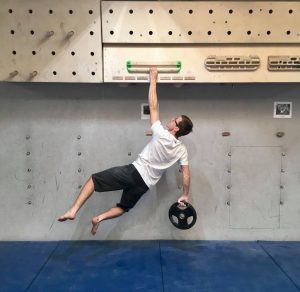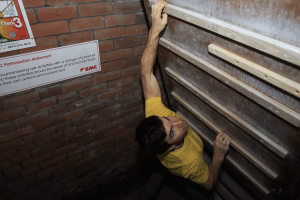The Truth Behind Strength Training: 4 Pillars – Tom Randall
The Truth Behind Strength Training by Tom Randall
We’ve got some words of advice (and theory) from coach Tom Randall on the subject of strength training for climbing. Take the right approach and these can massively play to your advantage!
You probably obsess about strength most of the year whether it’s about gaining it or losing it …. I know I do! Because there’s so many different elements that go into strength training, I thought I would break down 4 areas for you that really matter when it comes to this part of your training. ALL of these elements go into the strength equation and it’s the best athletes and coaches that think about how they’re going to periodise and maximise them.

Ok – the headline – what are the four pillars? Where can you get the gains?!
Below I discuss muscular coordination, muscle-tendon unit changes, voluntary contraction & technique.
PILLAR 1: Muscular coordination. What we’re talking about here, is the group of muscles involved with the strength element you’re looking at – let’s call it finger strength in this case. We have both agonists and antagonists in almost all movements and so we can see effective “increases” in strength via improvements in coordination across the agonists and antagonists.
* Coordinated effort between push and pull = better force product
Interestingly also, you can train the agonists in your prime movers to also move in a more coordinated (effective) manner by training very close to your 1RM with a high degree of specificity. This is a good grounded truth in strength training! You can see it in a squat…. you can apply it in a deadhang.
* Coordinate groups of agonists better = better force production

PILLAR 2: The muscle-tendon unit. As you are probably aware, we can increase the force exerted by a muscle-tendon unit via increases in cross-section area (hypertrophy) and we can also increase force via changes in tendon stiffness and changes in fascicle length. Hypertrophy in research appears to be most affected by adherence of exercise set to failure, session intention and correct intensity loading. Likewise we see changes (increase) in tendon stiffness at submaximal loads and not 1RM max intensities! Lot of interesting changes in training to be achieved here.
* Greater tendon stiffness in MTU = better force production
* Great size in muscle (x-section) = better force production
PILLAR 3: Voluntary contraction. We’re able to affect changes in the force exerted in a muscle by increasing the number of motor units to be recruited. This is the other side of the coin in contrast to changing muscle size! Very heavy loads (including supra-maximal forces via eccentrics) show the best increases in voluntary contraction forces – a lot this can be achieved on a campus board and/or fingerboard max hangs!
* More motor units recruited = better force production

PILLAR 4: Technique. Yes, we said the technique word whilst talking about strength training! You can see big improvements in almost any strength metric/exercise via an increase in the economy of movement. With all techniques, you want to allow time to learn and digest and this is often facilitated via coaching and watching others. Also don’t forget that ultimately you won’t develop the best strength technique unless you’re operating right at maximum – prime mover muscle groups will often operate in a different manner under different loads (see pillar 1!)
* Increased economy of movement = better force application
As you can see in the four pillars discussed above, there are actually quite a lot of varied approaches you can take with strength training – fascinating isn’t it?! What’s also cool about it, is you can prioritise and periodise these across the year as well, so that you can get the greatest cumulative effect whilst also training and improving other elements of the sport.
Just writing this piece has reminded me how cool training for sport is!!






